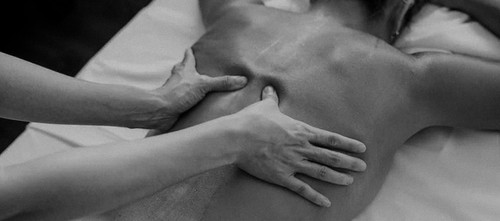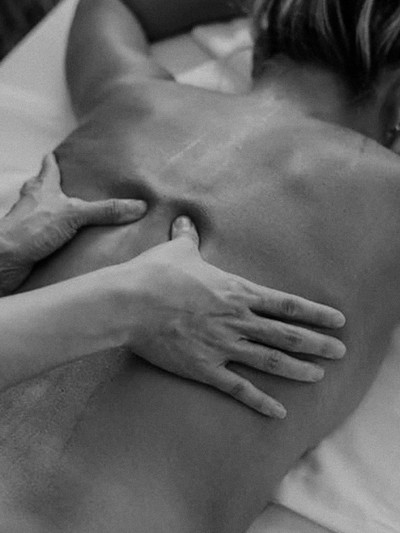

Everything You Need To Know About Lymphatic Drainage
All products on this page have been selected by our editorial team, however we may make commission on some products.
It’s Not Just A Massage
A lymphatic drainage massage is designed to stimulate the lymphatic system, which is responsible for removing waste, toxins and excess fluid from the body. During a treatment, gentle and rhythmic movements are used to promote the flow of lymph, aiding in the detoxification process and boosting the immune system. It can be beneficial for reducing swelling, improving circulation, and relieving conditions such as lymphedema and post-surgical swelling.
The difference between a lymphatic drainage massage and others is the pressure and movements that are used. A lymphatic drainage massage uses specific techniques that are gentle, light and rhythmic across the surface of the skin. The goal is to lightly stretch the skin and stimulate the lymphatic vessels to promote the flow of lymph fluid. Other massages, such as Swedish or deep tissue, focus more on pressure and kneading the muscles.
Different Techniques Can Be Tailored To Your Needs
The most common and widely recognised lymphatic drainage method is the Vodder technique, developed by Emil Vodder. It involves using gentle and rhythmic strokes to stimulate lymphatic flow. Meanwhile, the Foldi technique incorporates more vigorous movements and is often used for treating lymphedema. The Leduc Method focuses on enhancing the flow of lymphatic fluid through specific hand movements and sequencing and the Casley-Smith Method involves a combination of manual lymphatic drainage, compression bandaging and exercises. Finally, there’s the Brushing Technique, where a soft-bristled brush stimulates lymphatic flow by gently brushing the skin in the direction of the lymphatic pathways. It is often used in combination with other massage techniques.
It Works For Everyone
Lymphatic drainage massages are suitable for almost everyone, albeit with some exceptions. They’re especially beneficial for people who have lymphedema or post-surgical swelling – often people with lymphedema have liposuction and the lymphatic drainage massage is integral to the healing process. Lymphatic drainage is also suited to individuals with weakened immune systems, those seeking detoxification, stress reduction and an improvement in their overall well-being. Moreover, it’s also extremely beneficial for pregnant women, anyone who is post-partum and those who struggle with water retention. Finally, if you’re looking for cellulite reduction or help with chronic skin conditions like acne and eczema, lymphatic drainage is certainly worth trying.
There Are Aesthetic Benefits
A lymphatic drainage massage offers various aesthetic benefits, many of which work from the inside out. Not only can you benefit from improved intestinal transit and hormonal balance, but the main aesthetic result is a more toned silhouette, as well as improved skin tone and texture. The procedure removes excess fluid and toxins to reduce water retention and puffiness across the whole body and so it aids with facial swelling or bloating and constipation.
For best aesthetic results, ask for a combined sculpting and drainage massage. Together, the two can help you achieve long-term results – I mostly use the Manuela Shalah technique. However, you also need to maintain a healthy and active lifestyle to see long-lasting change.
There Are Some Common Mistakes People Make
Applying excessive pressure can be counterproductive and may not effectively stimulate lymph flow. It's important to use the appropriate amount of pressure to avoid discomfort or potential harm, too. Inconsistent sessions are so common, but it limits the effectiveness of this type of therapy. Other common mistakes people make are things like focusing solely on symptom relief; while lymphatic drainage massage can help with swelling and other symptoms, it’s also important to address the underlying causes. Communication with your therapist is key to ensuring the massage is tailored to your specific needs and not providing adequate information to the therapist can affect how well the treatment works.
You Can Help Yourself At Home
Deep breathing exercises can help increase lymphatic circulation and stimulate the movement of lymph fluid in your body. Eating healthily and exercising also stimulates lymphatic circulation. You can also give yourself a gentle massage on the areas where the lymph nodes are concentrated, such as the neck, underarms, groin and behind the knees. This can help stimulate lymphatic flow, and using a dry brush will also help exfoliate the skin at the same time. Wearing tight clothing, especially around areas where the lymph nodes are located, can restrict lymphatic flow, so opt for loose-fitting clothing to allow for proper circulation. Along with staying active throughout the day, elevate your legs regularly. If you have swelling in your lower limbs, this can help facilitate lymphatic drainage. Lastly, place a warm compress or towel over any areas of swelling or congestion to relax the tissues, improve circulation and assist with lymphatic drainage.
For more information and advice, follow @RafaelaRochas.
DISCLAIMER: Features published by SheerLuxe are not intended to treat, diagnose, cure or prevent any disease. Always seek the advice of your GP or another qualified healthcare provider for any questions you have regarding a medical condition, and before undertaking any diet, exercise or other health-related programmes.
DISCLAIMER: We endeavour to always credit the correct original source of every image we use. If you think a credit may be incorrect, please contact us at [email protected].

